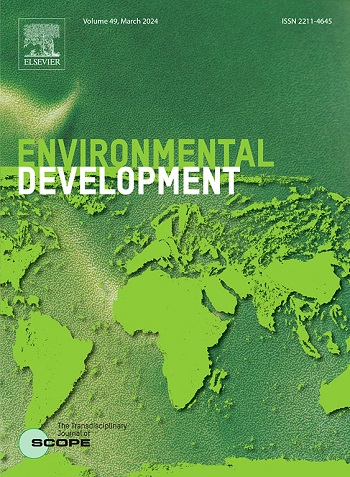巴西塞拉多地区韦雷达斯环境的人类化后果
IF 4.7
2区 环境科学与生态学
Q2 ENVIRONMENTAL SCIENCES
引用次数: 0
摘要
韦雷达斯被认为是一种湿润的热带稀树草原植物学,对保护塞拉多(Cerrado)具有重要意义。本研究旨在评估人类活动对环境保护区(EPA)韦雷达斯环境中土壤和植被退化的影响。研究选取了韦雷达斯保护区和人类活动区两种环境。人类化环境指的是由于经常发生森林火灾以及家畜的存在而导致植被丧失的韦雷达斯地区。在这些地区,采集了样本以评估土壤特性,并进行了植物调查以确定植被特征。研究发现,在韦雷达斯环境中,森林火灾和家畜驱动的无节制人类化进程导致这些环境的土地植被和土壤退化。植被消失表现为人类化环境中存在的个体和物种数量减少。有机质含量和肥力下降,而土壤密度增加。人类化环境中生物质加速分解和(或)生物质燃烧产物的沉积可以解释这些结果。我们还分析了火烧灶的统计数据,发现在 Entisols 和 Oxisols 环境中,火烧灶的数值与土壤类别的关系最大。在 Entisols 环境中观察到的火灶体积密度最高,这是受由草组成的草本层的影响。因此,迫切需要了解韦雷达斯环境在可持续利用保护单位(如环境保护局)中的人类化过程。我们的研究结果有助于制定和实施环境政策,以最有效地保存和保护这些地区。本文章由计算机程序翻译,如有差异,请以英文原文为准。
Consequences of anthropization in the Veredas environments in the Brazilian Cerrado
The Veredas are considered a wet savanna phytophysiognomy that is important for the preservation of the Cerrado. This study aims to evaluate the impacts of anthropic actions on soil and vegetation degradation in the Veredas environments in the Environmental Protection Area (EPA). Two environments of preserved and anthropized Veredas were selected. Anthropized environments are understood as areas of Veredas that had their vegetation cover lost due to the occurrence of recurrent forest fires associated with the presence of domestic animals. In these areas, samples were collected to evaluate soil characteristics, and floristic surveys were conducted to characterize vegetation. It was found that the uncontrolled anthropization process driven by forest fires and domestic animals in the Veredas environments led to the degradation of the land cover and soils of these environments. Vegetation removal is manifested by a reduction in the number of individuals and species present in anthropized environments. Organic matter content and fertility have decreased, while soil density has increased. These results are explained by the accelerated decomposition and (or) by the deposition of biomass burning products in anthropized environments. We also analyzed statistics of fire foci and found the highest values in relation to soil classes in the Entisols and the Oxisols environments. The highest bulk density of fire foci was observed in the Entisols environments and is influenced by the presence of an herbaceous stratum composed of grasses. Thus, an understanding of the anthropization processes of the Veredas environments in conservation units for sustainable use, such as the EPA, is urgently required. Our results facilitate the development and enaction of environmental policies for the most effective preservation and protection of these areas.
求助全文
通过发布文献求助,成功后即可免费获取论文全文。
去求助
来源期刊

Environmental Development
Social Sciences-Geography, Planning and Development
CiteScore
8.40
自引率
1.90%
发文量
62
审稿时长
74 days
期刊介绍:
Environmental Development provides a future oriented, pro-active, authoritative source of information and learning for researchers, postgraduate students, policymakers, and managers, and bridges the gap between fundamental research and the application in management and policy practices. It stimulates the exchange and coupling of traditional scientific knowledge on the environment, with the experiential knowledge among decision makers and other stakeholders and also connects natural sciences and social and behavioral sciences. Environmental Development includes and promotes scientific work from the non-western world, and also strengthens the collaboration between the developed and developing world. Further it links environmental research to broader issues of economic and social-cultural developments, and is intended to shorten the delays between research and publication, while ensuring thorough peer review. Environmental Development also creates a forum for transnational communication, discussion and global action.
Environmental Development is open to a broad range of disciplines and authors. The journal welcomes, in particular, contributions from a younger generation of researchers, and papers expanding the frontiers of environmental sciences, pointing at new directions and innovative answers.
All submissions to Environmental Development are reviewed using the general criteria of quality, originality, precision, importance of topic and insights, clarity of exposition, which are in keeping with the journal''s aims and scope.
 求助内容:
求助内容: 应助结果提醒方式:
应助结果提醒方式:


